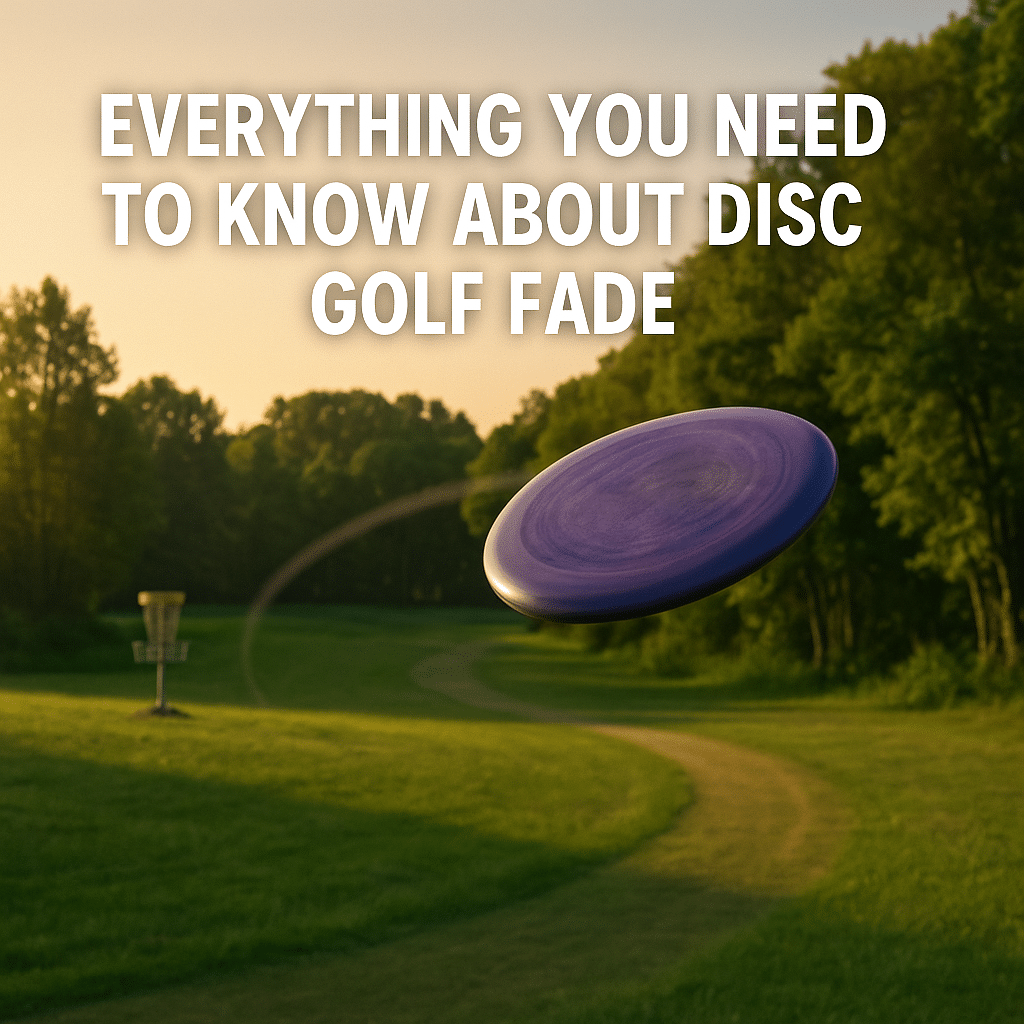
Understanding How Fade Affects Your Disc Golf Game
Are you making the most of disc golf fade? Or is it costing you strokes on the course without you even realizing it? Whether you’re new to the sport or a seasoned player trying to refine your bag, understanding fade is crucial.
In this guide, we’ll break down what fade means, how to read it from a disc’s flight numbers, and when to reach for discs with high or low fade ratings. Let’s dial in your shot selection and improve your game.
What Is Fade in Disc Golf?
In disc golf, fade refers to how much a disc turns at the end of its flight as it slows down. Most discs, especially overstable ones, will finish their flight by fading—typically hooking to the left for a right-handed backhand (RHBH) thrower and to the right for a left-handed backhand (LHBH) thrower.
Fade is the fourth number in a disc’s flight rating system. It’s typically rated between 0 and 5:
- 0 Fade: The disc finishes straight, with little to no hook at the end.
- 5 Fade: The disc has a very strong finish and fades hard at the end of its flight.
You can shop discs based on their flight ratings here on Altitude Disc Golf to fine-tune your bag.
When to Use Discs With High Fade
High fade discs have a strong finish and are incredibly useful in the following scenarios:
✔️ Shot Shaping
Need to hit a sharp dogleg left? Discs with high fade are perfect for navigating tricky angles. For RHBH throwers, these discs will reliably hook left at the end, helping you carve tight corners.
✔️ Headwind Stability
Headwinds can make your disc act more understable, turning it more than expected. High fade discs counteract this, providing a reliable finish even in wind. Consider discs like the Discmania Tilt or the Discraft Zone OS when the wind picks up.
✔️ Distance Control
If you’re approaching a basket with OB behind it, a high fade disc can help you land short and skip predictably without sailing past your target. It’s a great way to manage risk and stay in bounds.
✔️ Hyzer and Skip Shots
High fade discs are ideal for:
- Hyzer lines
- Spike hyzers
- Flex shots
- Skip shots toward the basket
Want a reliable skip finish? Grab a disc like the Innova Firebird or Latitude 64 Pioneer.
When to Use Discs With Low Fade
Low fade discs fly straight longer and finish with little to no turn. They shine in these scenarios:
✔️ Max Distance
Looking to get every last bit of distance out of your drive? Low fade discs stay in the air longer and don’t hook early, making them great for big, straight shots.
Try options like the MVP Inertia or Prodigy F7 to add straight-gliding flight to your game.
✔️ Tunnel Shots and Tight Fairways
If you’re staring down a narrow fairway or a wooded tunnel, you’ll want something that holds its line. A low fade midrange or fairway driver is perfect here—think Discraft Buzzz or the ultra-straight Axiom Hex.
Too much fade in these situations increases your chance of clipping trees or missing your intended line.
Final Thoughts
Understanding and utilizing fade is a game-changer. Whether you’re shaping a line around a corner or attacking a narrow fairway, having the right fade can be the difference between birdie and bogey.
Remember:
- High fade = more hook, better in wind, great for hyzers
- Low fade = longer glide, straight finishes, perfect for tunnels
Take a field day, grab a few discs with varying fade ratings, and test them out. You’ll quickly develop a feel for what works best in different situations.
Need to build your bag? Shop by flight ratings, or explore our curated beginner-friendly picks if you’re just getting started.
Happy fading!
